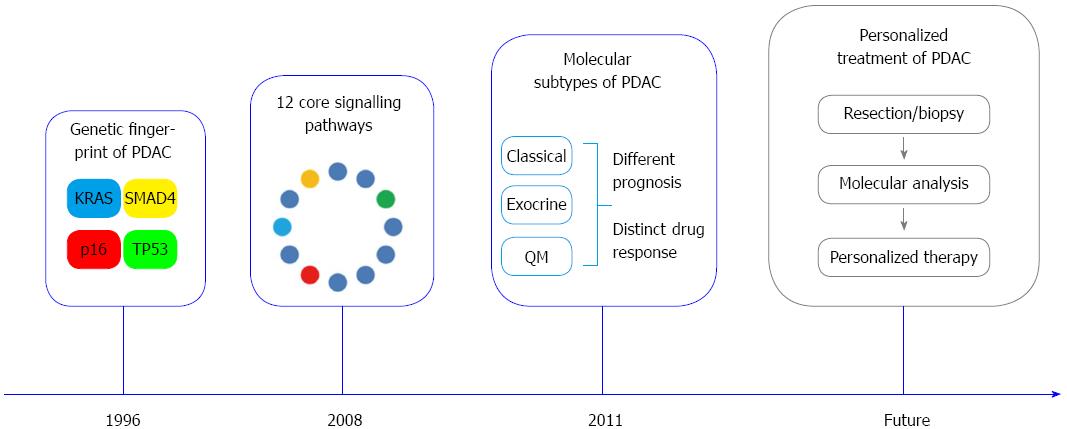Copyright
©2014 Baishideng Publishing Group Inc.
World J Gastroenterol. Oct 14, 2014; 20(38): 13833-13841
Published online Oct 14, 2014. doi: 10.3748/wjg.v20.i38.13833
Published online Oct 14, 2014. doi: 10.3748/wjg.v20.i38.13833
Figure 4 Milestones in pancreatic cancer biology.
Mutations of KRAS, CDKN2A/p16, SMAD4 and TP53 represent the molecular fingerprint of pancreatic ductal adenocarcinoma (PDAC)[53]. Global genomic analysis of PDAC defined a set of 12 core signalling pathways commonly altered in the great majority of investigated tumors[17]. Three distinct molecular PDAC subtypes [“classical”, “quasi-mesenchymal” (QM) and “exocrine-like”] with prognostic relevance and distinct drug response were defined based on combined analysis of transcriptional profiles of primary tumor samples and human and mouse PDAC cell lines[54].
- Citation: Esposito I, Konukiewitz B, Schlitter AM, Klöppel G. Pathology of pancreatic ductal adenocarcinoma: Facts, challenges and future developments. World J Gastroenterol 2014; 20(38): 13833-13841
- URL: https://www.wjgnet.com/1007-9327/full/v20/i38/13833.htm
- DOI: https://dx.doi.org/10.3748/wjg.v20.i38.13833









